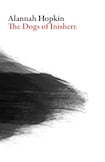
The protagonist of Star Quality, one of the strongest stories in this new collection, is Kurt Karlsson, a retired Hollywood star living in rural Ireland. He is renowned for a classic movie, The Fall of the House of Usher, and is described in these terms: “The world’s most handsome man, they called him back in the forties, when he gave such a superb performance as the dying aesthete, Roderick Usher.” This reference to a canonical Gothic text is not accidental, as these apparently naturalistic stories have a linked preoccupation with the uncanny or the inexplicable.
The best of these stories have a twist into the unknown, an unexpected lurch from the rational into the ambivalent, and the one or two stories that were less successful for me were those without this faint, almost imperceptible suggestion of the Gothic. As another character tells us, “I like the feeling, a sensation that I call a slippage, when some part of your being slips into another time, joins the ghosts of another age, then slips back into this world, mildly disorientated and perhaps a little wiser.”
What links these deceptively artless stories is the hint of unsettling possibilities
Alannah Hopkin has published two novels; this is her first short-story collection, which includes published and unpublished writings from 1983 to now. The settings vary – a Catholic boarding school, bohemian London, a town in Tipperary, isolated islands off the coast of Ireland – but what links these deceptively artless stories is the hint of unsettling possibilities. In many of the stories, there are intimations of unknowable worlds rearing up unexpectedly, disturbing the placid surface of everyday life.
The collection is short, but even that brevity focuses the reader on the quietly unsettling atmosphere of these imagined lives. Elizabeth Bowen once wrote that “the short story revolves around one crisis only – one might call it, almost, a crisis in itself. There (ideally) ought to be nothing in such a story which can weaken, detract from, or blur the central, single effect”.
This single effect, this moment of crisis, is seen clearly in the title story. Here, the female protagonist, a photographer visiting the island of Inishere, finds herself in what seems to be the beginnings of a new relationship. This burgeoning relationship is put in doubt by the final paragraph. “Later that day, as Michael and Katy were carrying their bags from the B and B to the pier they saw the terrier at the entrance to the Cortina field, stuck immobile to the spaniel. The sheep dog, the groveller and the dachshund were watching patiently, waiting their turn.”
Death of a poet
The uncanny makes a more direct appearance in an excellent story, Twentyquidsworth, with the phenomenon of a living apparition. Here, sad news of the death of a former lover, a poet, reminds the central character of an incident many years before, in the late 1970s, when her love affair began. The woman, a writer herself, had moved from London to a borrowed house in Ireland, only to discover that the house is believed to be haunted. Alone on the first night, waiting for her poet lover to join her, she experiences a kind of erotic visitation, something made chillingly real when he finally joins her days later.
Always, the rational is somewhere to the margins of these stories, as with Strangers, another island story. The female protagonist, again a photographer, visits an isolated west Cork island and meets a young girl, Melinda, living in the only inhabited house there with her grandfather. Melinda is anxious to bring the photographer to meet her “friends”, Rachel and Audrey. These turn out to be two upright stone figures jutting up against the rock face on the strand, somehow made in to the likeness of statues by the workings of the sea and the wind. The narrator takes photographs of the stone figures but only when she prints them does she discover that “Audrey and Rachel really did look like emaciated old women”.
Eventually, the flight of Melinda and her grandfather from the island and the discovery of the sinister reality behind their lives all serve to underline the unsettling undertone of the story. In all, an impressive collection, the clear, confident style allowing each central crisis to be revealed with rewarding clarity and directness.
- Eibhear Walshe lectures in the School of English, UCC. His novel The Diary of Mary Travers was published by Somerville Press in 2014











